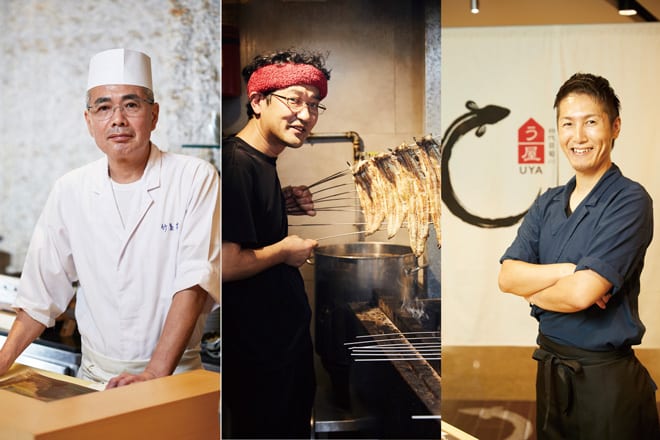Can you “eel” it? Grilled unagi is fast gaining popularity in Singapore, with three speciality restaurants vying for the top spot.
Left: Chikuyotei / Center: Uya 四代目菊川 / Right: Man Man Japanese Unagi Restaurant
Soft and supple, fatty and sweet, crispy and smoky—grilled unagi (eel) has been a popular dish in Japan since the 1600s. It was a traditionally inexpensive dish but has become a luxury item due to the increase in price caused by a dwindling eel population. There is even a customary eel-eating day there, which falls on the Day of the Ox, sometime between 19 July and 7 August. In fact, unagi is usually eaten in summer as the dish is said to give you extra energy to recover from the hot humidity.
Which means that grilled unagi is perfect for our tropical climate, where it is summer all year round! In Singapore, grilled unagi has been a staple in many Japanese restaurants throughout the years. But its popularity spiked when Michelin Bib Gourmand winner Man Man Japanese Unagi Restaurant entered the local market in 2016, introducing hour-long queues of eager eel-eaters and shining a spotlight on this snake-like fish.
There are two distinct ways of preparing eel: Kanto and Kansai style. In Kanto (Tokyo) style, the eel is slit down its back then par-grilled, steamed, dipped in tare (basting sauce) and grilled again till crispy, resulting in tender, flaky meat. In Kansai (Osaka) style, the eel is slit down the belly, dipped in tare and grilled for a longer period of time to achieve extra crispy skin and moist meat.
The regional way of serving eel in Aichi Prefecture, a top eel cultivating region, is Hitsumabushi style. The grilled eel is cut into smaller pieces and placed on a bed of rice. Condiments include fresh wasabi, sansho pepper, chopped green onions and nori seaweed. Your first taste should be of the unagi on its own, following which you enjoy it with the condiments. The third taste should include some broth poured over it. And lastly, you can enjoy it in whichever of the three methods you prefer.
Each unagi restaurant boasts its own special tare. While usually prepared simply with mirin and soy sauce as the main ingredients, the secret is the years and sometimes decades worth of eel that has been dipped into it, flavouring the sauce richly. Some restaurants claim to have kept the pot of sauce going for more than 100 years!
Let’s find out more from the chefs at these three speciality unagi restaurants in Singapore.
